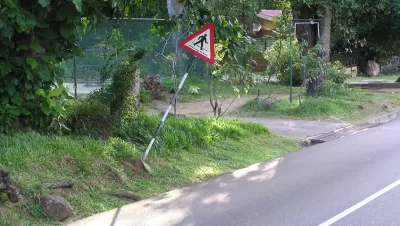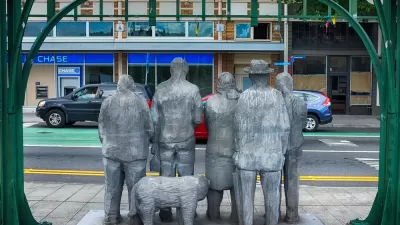Though the quick expansion of complete streets policies is worth celebrating, minority and low-income communities are still being left behind, and killed at a disproportionate rate.

Leah Binkovitz provides coverage of the recently released "Best Complete Streets Policies 2016" [pdf] report, recently released by Smart Growth America.
Previous coverage focuses mostly on the winners of the "best" title and the quick growth of complete streets policies around the country, but Binkovitz chooses a different frame through which to consider the findings of the study: equity.
Across the country, the annual report from Smart Growth America that documents and evaluates Complete Streets policies passed within the last year, found that Complete Streets efforts tended to concentrate in whiter localities. Massachusetts and Washington state alone accounted for 65 percent of all the policies included in the analysis. The report also found that the jurisdictions passing these policies tended to be wealthier. “The median income of communities that passed or updated a policy in 2016 was $59,347,” the report reads, “about 10 percent above the national average of $53,889.”
The other side of this equity coin is the tendency of pedestrian fatalities to occur in low-income communities, and people of color are more likely to be killed by drivers.
Binkovitz also notes that the city of Houston is one of the U.S. cities to add a complete streets policy in recent years, with mixed results in project delivery and increasing fatalities among pedestrians and bicyclists.
FULL STORY: COMPLETE STREETS POLICIES WERE CONCENTRATED IN WHITER, WEALTHIER AREAS IN 2016, ACCORDING TO NEW REPORT

Planetizen Federal Action Tracker
A weekly monitor of how Trump’s orders and actions are impacting planners and planning in America.

Congressman Proposes Bill to Rename DC Metro “Trump Train”
The Make Autorail Great Again Act would withhold federal funding to the system until the Washington Metropolitan Area Transit Authority (WMATA), rebrands as the Washington Metropolitan Authority for Greater Access (WMAGA).

DARTSpace Platform Streamlines Dallas TOD Application Process
The Dallas transit agency hopes a shorter permitting timeline will boost transit-oriented development around rail stations.

San Francisco's School District Spent $105M To Build Affordable Housing for Teachers — And That's Just the Beginning
SFUSD joins a growing list of school districts using their land holdings to address housing affordability challenges faced by their own employees.

Car-Centric LA Suburb Looks to a Train-Oriented Future
City leaders in Rancho Cucamonga, the future western terminus of the Brightline West rail line to Las Vegas, want to reimagine the city as a transit-oriented, pedestrian-friendly community.

New Alaska Bitcoin Mine Would Burn as Much Energy as the State’s Largest Coal Plant
Fueled by “stranded” natural gas, the startup hopes to become the largest in the US, and to make Alaska an industry center.
Urban Design for Planners 1: Software Tools
This six-course series explores essential urban design concepts using open source software and equips planners with the tools they need to participate fully in the urban design process.
Planning for Universal Design
Learn the tools for implementing Universal Design in planning regulations.
Municipality of Princeton
Roanoke Valley-Alleghany Regional Commission
City of Mt Shasta
City of Camden Redevelopment Agency
City of Astoria
Transportation Research & Education Center (TREC) at Portland State University
US High Speed Rail Association
City of Camden Redevelopment Agency
Municipality of Princeton (NJ)




























